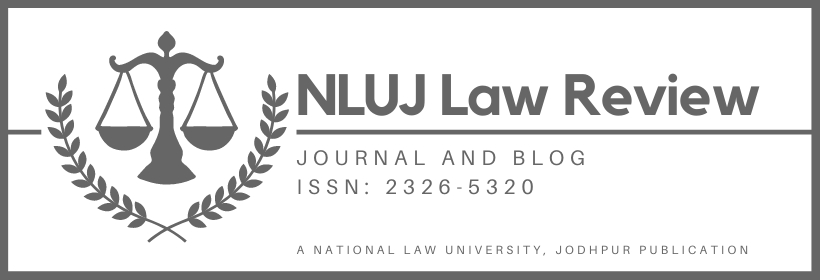The Ministry of Home Affairs (MHA) has recently launched the Cyber Crime Volunteers Concept allowing citizens to identify unlawful content on social media platforms. The Jammu and Kashmir Police, especially has asked the citizens to register as a cyber volunteer to facilitate the identification of “unlawful content” that is anti-national or promotes “radicalization”. This program aims to counter anti-national activities through citizens participation which promotes lateral surveillance practices.
Lateral surveillance involves peer-to-peer monitoring. It is a “conscious effort by governments to encourage citizens to be the ‘eyes and ears’ of the police in their war against crime, disorder, and terrorism”. The government reminds citizens to remain, conscious and vigilant and report unusual and, suspicious objects or such activities in a public place. It differs from traditional surveillance practices as the power dynamic is decentralized rather than hierarchical. The conception of Traditional surveillance involves population management through a hierarchical structure, where the balance of power is overwhelmingly tipped in favor of the surveillant. It creates a vertical relationship between the person monitoring and the person being monitored. For instance, the government surveilling citizens.
This article contends that Cyber Volunteer Crime Concept regenerates lateral surveillance capabilities by forming a Semi-Regulated Peer-to-Peer Social surveillance structure. It creates novel features and facilitates imminent harms such as Self-monitoring, the culture of suspicion, fear, and Predictive policing.
Brief Account on Semi-Regulated Peer-to-Peer Social Surveillance
The Cyber Crime Volunteers Program (“volunteer program”) promotes the inverse phenomenon of semi-regulated peer-to-peer social surveillance (hereinafter SRPSS) on social media platforms.
The volunteer program forms a semi- regulatory surveillance structure, an extension of lateral surveillance. The current surveillance structure functions through an interdependent relationship between government and citizens. The government regulate citizens monitoring powers. It indicates that the government is not involved in the actual monitoring process. The government recruits’ volunteers and directs them to monitor social media platforms for anti-national content. This process delegates surveillance capabilities to citizens for a limited purpose, thereby rejecting a hierarchical structure. A semi-regulatory surveillance structure creates novel features. The government and citizens possess limited control over the actual surveillance process. In practice, the volunteers perform the act of monitoring social media. Whilst, the government regulates the functioning of the volunteers. Therefore, creating an inter-dependent relationship between the regulator (government) and facilitator (citizen) of surveillance.
SRPSS demonstrates surveillance of human interactions, expression, and endorsement of ideas on social media platforms. The focus of surveillance leans towards human digital interactions. It also alters the collection of information and categorization. Rather than expansively collecting data, it collects data in a limited manner under the anti-national category. However, the term anti-national stands in ambiguity. As the government in the guise of national interests continues to clamp down right to criticize and dissent.
The set of novel features indicate a rhizomatic offshoot or regeneration capability of surveillance. Deleuze and Gutari note the growth and expanding uses of surveillance stem out from the necessity to provide a more encompassing or penetrative form of surveillance. The regeneration suggests subtle variations and intensification in the existing methods of surveillance. The prioritization of power and interest motivates the intensification of the surveillance that one group may better control others. For instance, in modern industries, the management’s interest to oversee and monitor the labor process (workplace surveillance) is aimed at increasing production and creativity. The use of credit and debit cards (plastic surveillance) allow simultaneous monitoring of user consumption and behavioral choices that might be used by corporate giants to influence them.
An extension of surveillance apparatus is driven by the institutional need to create “focused and systematic attention for the purpose of influence, management, and control”. The current form of extension creates over-compliance and monitors citizens digital interactions. The primary motive behind such expansion is the government’s agenda to regulate speech or to monitor a new population (in this case users of social media platforms) that may require a greater degree of monitoring.
Chilling Effect on Social Media Platforms
Social Media platforms such as Twitter, Facebook, and Instagram depict the continuous process of reciprocal social surveillance between peers. The design of social media allows mutual monitoring of consumer-generated information in continuity with ease. For instance, two friends can simultaneously watch each other’s Facebook feed.
Social media platforms allow citizens to exercise freedom of speech and expression or disseminate information. SRPSS implements a soul training structure, use of discipline to establish a stable society that strives to achieve government-issued goals. In order to so, they need constant control, and this is achieved through continuous monitoring of citizens’ digital interaction. In this case, regulating the population on social media and aligning their interactions according to the government.
The involvement of the state in social media monitoring is associated with a diverse purpose of managing human behavior, regulating speech, and monitoring the new population.
As noted earlier, the state creates novel methods to surveil citizens. This practice was observed by the Supreme Court in the landmark Shreya Singhal judgment. The court opined that the language of law creates novel methods to disturb people’s right to freedom of speech and expression through the internet. Furthermore, Section 66A of the Information Technology Act was struck down on the grounds of vagueness, over-breadth, and chilling effect. The section was used to targets citizens involved in lukewarm criticism of the government and prominent political leaders. However, IFF reported that 1307 cases have been registered and 800 cases are presently pending under S66A. On July 14,2021, MHA issued a circular to direct all the police stations not to register cases under the repealed S66A of IT Act,2000.
In the current scenario, fear is used as a “disciplinary power”. Foucault argues that disciplinary power, together with the perception of surveillance, moderates social behaviour. In the technological age, disciplinary power has been recast in security cameras, algorithms, police presence, and data mining.
Through the volunteer program, the government heightens the fear of surveillance on the social media web which creates a chilling effect on speech. The potential fear of being watched by government spies will regulate citizens actions and presentations on social media platforms. As described by Daniel Trottier, “the potential of being watched by others contextualizes their own surveillance”. Fear generates a disciplinary pattern amongst the citizens. Also creating a culture of avoidance, as citizens will avoid digital interaction with anti-national content which is not precisely defined by the volunteer program. Overall, it creates a sense of disciplinary structure that might curb freedom of speech and expression through the internet.
Delegation of Surveillance and Culture of Suspicion and Fear
As described earlier, the government via the volunteer program delegates surveillance capabilities. The act of the delegation generalizes the responsibility of national security and invites civilian participation in the fight against terrorism. A kind of interactive revolution, which allows individuals to thwart terrorism creates a society constantly mired in constant suspicion and fear. It creates a fight against potential offenders, or more accurately, a fight against ourselves. The volunteers who flag social media posts are ‘like-minded individuals’ whose biases may creep into the decision-making process. Also, a lack of clarity around the anti-national category might fuel hyper-policing on social media. The participation of citizens in the fight against crime offers little community protection. Rather, it escalates fear and distrust in society.
Doubling the gaze amplifies the power of the watcher. In this case, citizens become the extra eyes and ears of the government. As a consequence, citizens might respond to a security threat that might not carry imminent danger. It creates a society without trust, and normalizes eternal vigilance, and heightens the fear of crime. Citizens assume they are under a constant threat. Such perceived threat increases anxiety, intolerance, xenophobia, and potential tension amongst the citizens.
Furthermore, it increases the visibility of the new or existing population. It may include dissenters, a member of opposition parties, or an individual who does not subscribe to government policies. An ordinary citizen determining what social media content is anti-national fuels hyper-vigilantism. Whenever a citizen is displeased with the speech or online conduct of another citizen, he could flag the content without any legal basis and consequences. The government stated that it will verify the flagged content. However, a lack of transparency around the anti-national category might hamper the decision-making process. The current expansion also indicates greater surveillance of the religious minority communities. As instances show that the institutional players are already using surveillance technology for the purpose of proliferation. For instance, Uttar Pradesh Police during Citizenship Law protests used Facial Recognition Technology to identify and arrest 1100 people, which might include a large number of religious minorities. The civilian participation is based on a feeble institutional idea of fighting against potential crime and, offenders. The volunteer program in an invisible manner amplifies fear, suspicion and erodes community trust.
Function Creep and Predictive Policing
Whenever social media content is flagged anti-national, the visible information associated with the user profile can be used to create databases. For instance, The Uttarakhand Police is creating a database of anti-national social media activity. The database may contain information such as name, date of birth, association, locational data (which is easily available if a person is using Facebook or Instagram), and electronic interactions that can depict user affiliation and interests. The Information Technology (Intermediary Guidelines and Digital Media Ethics Code) Rules, 2021 lays down the provisions to trace first originators (who generates, transmits, or stores content). Rule 4(2) states that Significant Social Media Intermediaries (Facebook, Twitter, WhatsApp) “to enable the identification of the first originator of the information on its computer resource”. SSMIs are required to comply with this rule in two situations (i) where a judicial order is passed; or (ii) where an order is passed under Section 69 of the IT Act and the Information Technology (Procedure and Safeguards for interception, monitoring and decryption of information) Rules, 2009 (“IT Decryption Rules”).
In the first instance, the data collection might seem harmless. But if the data is developed and expanded for unanticipated purposes it creates function creep. T. Simoncelli and B. Steinhardt describe function creep as a “database created for one purpose, despite the initial promises of their creators, eventually, take on new function and purposes”. The tendency to use data for alternate purpose can conceptualize the practice of Predictive Policing, it refers to the analytic techniques used by law enforcement to forecast potential criminal activity.
The police can treat these users under the category of a potential offender (high-risk citizen). The categorization might lead to deepening the surveillance of individuals already listed as potential offenders. For instance, if a user tweet is flagged as anti-national. The information associated with the social profile is collected. If any crime occurs rather than searching for actual offenders, the police may look up the database for potential offenders. The digital interactions of an individual can be corroborated as sufficient evidence to label him as a suspect. Even if he did not commit the crime, the user information is not removed from the database. This phenomenon symbolises the occurrence of hyper-surveillance or directed surveillance towards flagged citizens. Such citizens might become more visible and vulnerable. For instance, according to the ABC News analysis “In 250 jurisdictions, black people were 10 times more likely to be arrested than their white counterparts”.
The Government can exploit data for alternate purposes because India currently lacks strong privacy legislation. Personal Data Protection Bill (PDP) is pending in the parliament. Hypothetically, if PDP was a law, according to section 5 (b) data should be used for the purpose consented by the data principal.
Several instances already suggest that police are already using data generated by digital interactions for monitoring purposes. In Jammu and Kashmir, citizens were questioned over the tweets criticising the government of India’s decision to remove the special status. In this case, citizens were determined as high-risk citizens due to their social media interactions. The police authorities used previous critical tweets as a basis of interrogation. As, once the data exist, institutional players always want to use it for different purposes.
Conclusion
The volunteer program poses novel questions around the monitoring of society. The modern institutional players impose discipline through surveillance structure to regulate the society. SPRSS suggests an intensification of surveillance that turns citizens into little brothers to watch over social media platforms. The amplification of surveillance through peer monitoring can be driven by political implications and the need of establishing social control. The injection of participatory nature extends monitoring to intimate parts of our life. Further, extending the gaze on our electronic interactions escalates fear and distrust in society. While the effectiveness of the volunteer program remains controversial. In a socio-political context, the volunteer program might be used to muffle free speech. Social media platforms have become an indispensable tool to exercise the freedom of speech and expression. Through social media platforms, there has been an increase in disinformation. Social media holds immense power to enhance as well as challenge the freedom and rights in a democratic country. Thus, it is very important to regulate harmful content on such platforms. The burden also lies upon the technological companies to identify and limit dissemination of harmful content. The Volunteer Program might deter the harms associated with harmful content on social media platforms. However, any surveillance apparatus should strictly follow the principle of proportionality laid down in the Puttaswamy judgment.
This article has been written by Ashish Kumar, student at Hidayatullah National Law University, Raipur.



